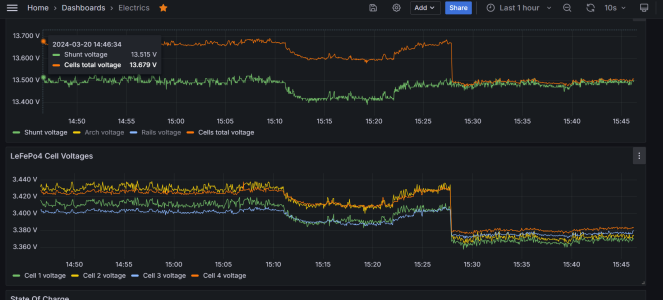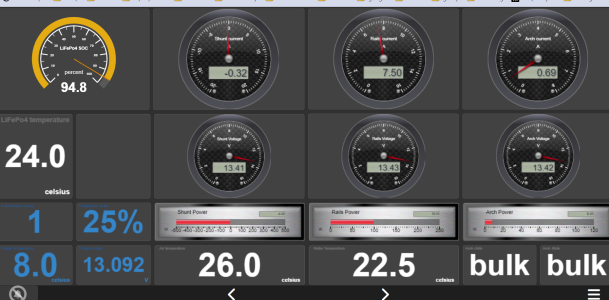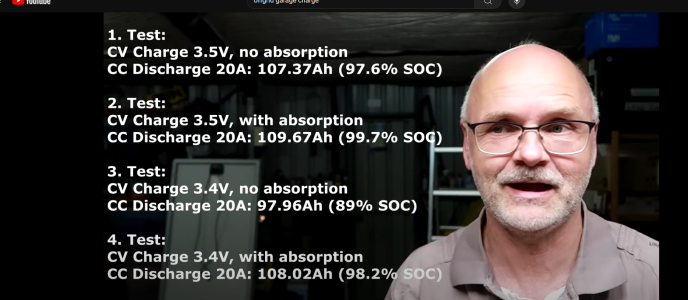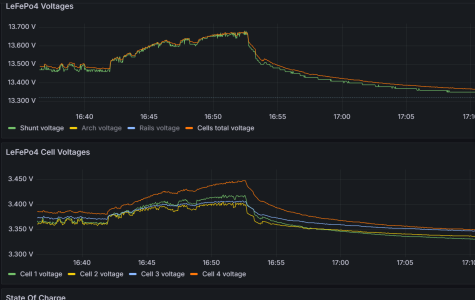gregcope
Well-known member
Hi All,
Thought I would give an update on year two of my DIY 304Ah Build.
Some data;
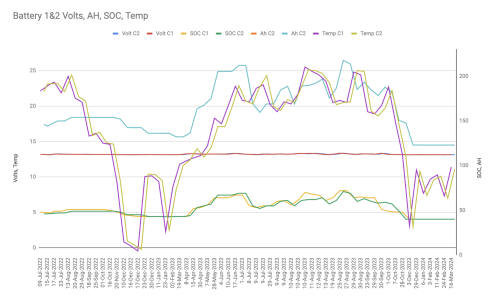
Some observations;
I have battery heaters to install. Although they would not be used as I never seem to be in a position to charge them when below 5C as the boat is shore. Also I need to hook up the RS485 to a VictronOS monitoring solution and graph this with that data instead of me screenshoting the Bluetooth app and putting it into a google spreadsheet. This will also allow me to enable alarms on low or high SOC/Battery/Cell V etc.
Thought I would give an update on year two of my DIY 304Ah Build.
Some data;

Some observations;
- Battery One is 316Ah, Battery Two 307Ah. This is intentional to force the smaller capacity one to drop out first if we ever get very, very low SOC.
- The FLA is charged by 110W of solar. The LifePo4 is charge by a 30W B2B from the FLA and during the season by 220W of solar. The Solar is removed when ashore (Nov-mid Mar). The batteries
- Lowest temp onboard was 3C. In the graph the dip to -1C was when they were in my shed! I had taken the Batteries home in Oct 2022-Mar-2023
- SOC is not accurate and should be treated as a guide
- This system easily keeps up with domestic and sailing loads, even with a few days of gray/low solar days
- Individual Cells voltage delta is around 1-2mV. There is a jump at 12mV when cells were being charged. The ballancer has not kicked in as the cells never reached 3.45V balancer voltage
- The batteries themselves drift in terms of SOC/Voltage. I went to some lengths to ensure Batteries were equal in terms of resistance/cabling. I need to investigate this a little more, although its easily addressed by switching off a high/low battery and letting the other catch up - you can see a few examples of this over the years
- I intentionally keep SOC between 30-70% Although this is hard when doing long motoring on sunny days as the solar and B2B easily charge the Batteries and drive up the SOC
- Overwinter 2023-2024 the SOC/Voltage does drop. There was much more temperature variation in the (insulated) in land shed than onboard in the car park next to the sea.
- Overwinter 2023-2024 the SOC/Voltage is flat. Remarkably low (nearly unmeasurable) self-discharge. The voltage and SOC are flat - cell voltage is hardly change, Battery voltage is unchanged as is SOC.
- 40% SOC is around 130Ah (ish) which means I start the season with 260Ah nominal or around 130Ah usable (to 20% SOC). Which is still nuts as the previous FLAs I had combined had 130Ah usable if fully charged
I have battery heaters to install. Although they would not be used as I never seem to be in a position to charge them when below 5C as the boat is shore. Also I need to hook up the RS485 to a VictronOS monitoring solution and graph this with that data instead of me screenshoting the Bluetooth app and putting it into a google spreadsheet. This will also allow me to enable alarms on low or high SOC/Battery/Cell V etc.
Last edited:

